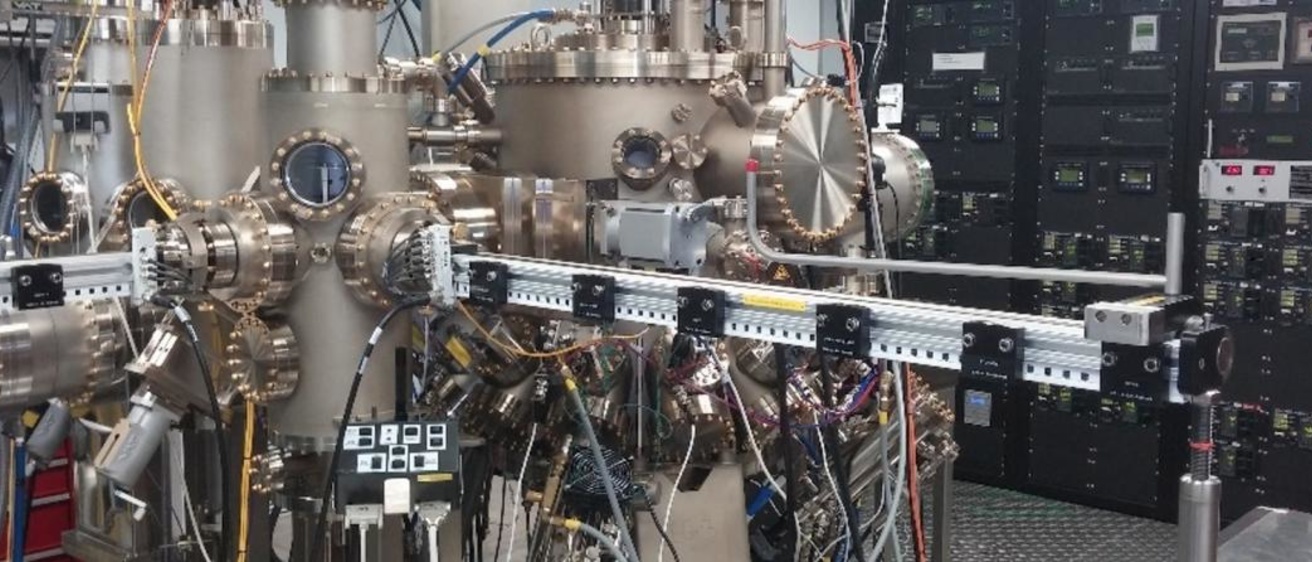We grow semiconductor crystalline layers in the Molecular Beam Epitaxy Lab with single atomic layer precision anywhere from a handful of atomic layers thick to many microns with purities better than one part in ten billion. Epitaxy also allows layering different lattice-matched or strained semiconductors. Thick layered heterostructures with different bandgaps can be used to confine electrons, or light due to the differing indices of refraction. Epitaxial growth allows realizing designer quantum structures, such as quantum wells, superlattices, quantum dots, and nanowires. The remarkable control of material optical, electronic, and morphological characteristics has allowed the creation of important technologies, such as diode lasers, photodiode detectors, light emitting diodes, photovoltaics spanning the electromagnetic spectrum, and high frequency transistors for applications such as fiber optic telecommunications, cell phones, solid state lighting, chemical sensing, solar cells, and a variety of other industrial and military technologies. It has also stimulated much work on the fundamental physics of solids, been a playground for studying many basic quantum mechanical phenomena, and been the subject of several Nobel Prizes in Physics, including the fractional quantum Hall effect (1998), semiconductor heterostructures (2000), and solid state lighting (2014).
Presentation: The Art and Science of Molecular Beam Epitaxy and the Nobel Prize for Blue LEDs
